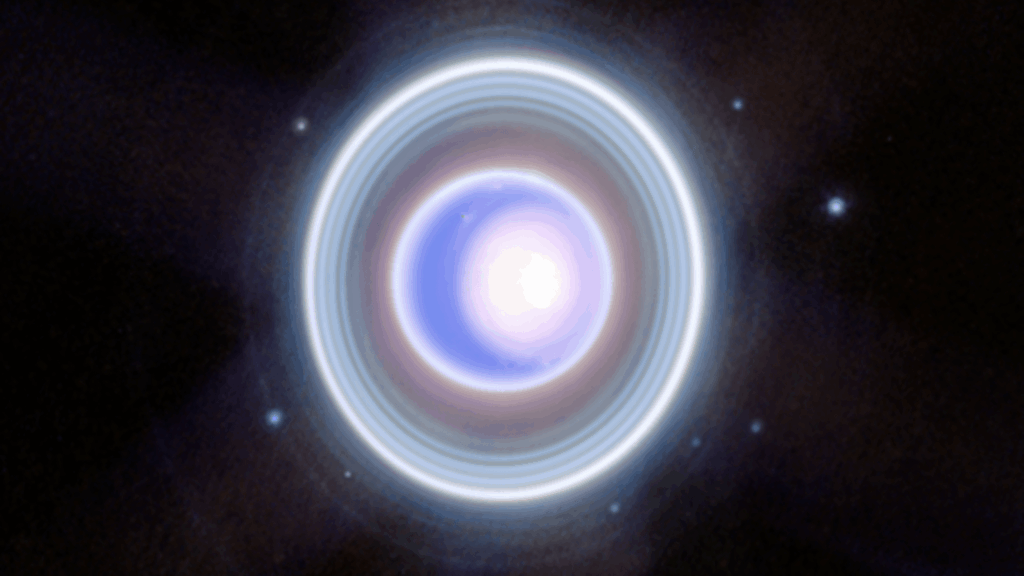
A new celestial body may have been discovered orbiting Uranus, potentially marking the planet’s 29th moon. Observations captured by the James Webb Space Telescope (JWST) earlier this year indicate the presence of this small satellite, temporarily designated as S/2025 U1. The findings are currently undergoing peer review for final confirmation, but initial data suggest it is indeed an addition to the ice giant’s family of moons.
The first indications of S/2025 U1 emerged on February 2, 2023, when the JWST focused its Near-Infrared Camera on Uranus. The telescope captured a series of ten images, each lasting 40 minutes. Preliminary analysis suggests this new moon is part of a complex system that includes 14 other smaller moons, situated inward of Uranus’ larger moons such as Ariel, Miranda, Oberon, Titania, and Umbriel.
According to Matthew Tiscareno, a researcher at the SETI Institute, “No other planet has as many small inner moons as Uranus, and their complex inter-relationships with the rings hint at a chaotic history that blurs the boundary between a ring system and a system of moons.” This statement underscores the unique nature of Uranus’s satellite system.
S/2025 U1 is estimated to measure approximately six miles in diameter, making it less than a third the width of New York City. It has a significantly lower solar reflectivity compared to Uranus’ other small moons, which could explain why the Voyager 2 spacecraft, during its flyby nearly 40 years ago on January 24, 1986, failed to detect it.
The moon orbits Uranus at a distance of about 35,000 miles from the planet’s center, positioned between the known moons Ophelia and Bianca, just outside the main ring system. As noted by Maryame El Moutamid from the Southwest Research Institute, its nearly circular orbit indicates it may have formed near its current location.
The discovery of S/2025 U1 not only adds to the intrigue surrounding Uranus but also hints at more potential discoveries. Tiscareno remarked, “The new moon is smaller and much fainter than the smallest of the previously known inner moons, making it likely that even more complexity remains to be discovered.”
The most recent moon identified prior to this one was S/2023 U1, discovered in 2023. Like its predecessor, S/2025 U1 will retain its temporary designation until it receives an official name from the International Astronomical Union. Historically, such names often reference characters from the works of William Shakespeare or Alexander Pope.
As astronomers continue to analyze data from the JWST, further insights into S/2025 U1 could shed light on the formation and evolution of Uranus’s moon system. With each new discovery, the mysteries of our solar system deepen, offering exciting avenues for exploration and research.







